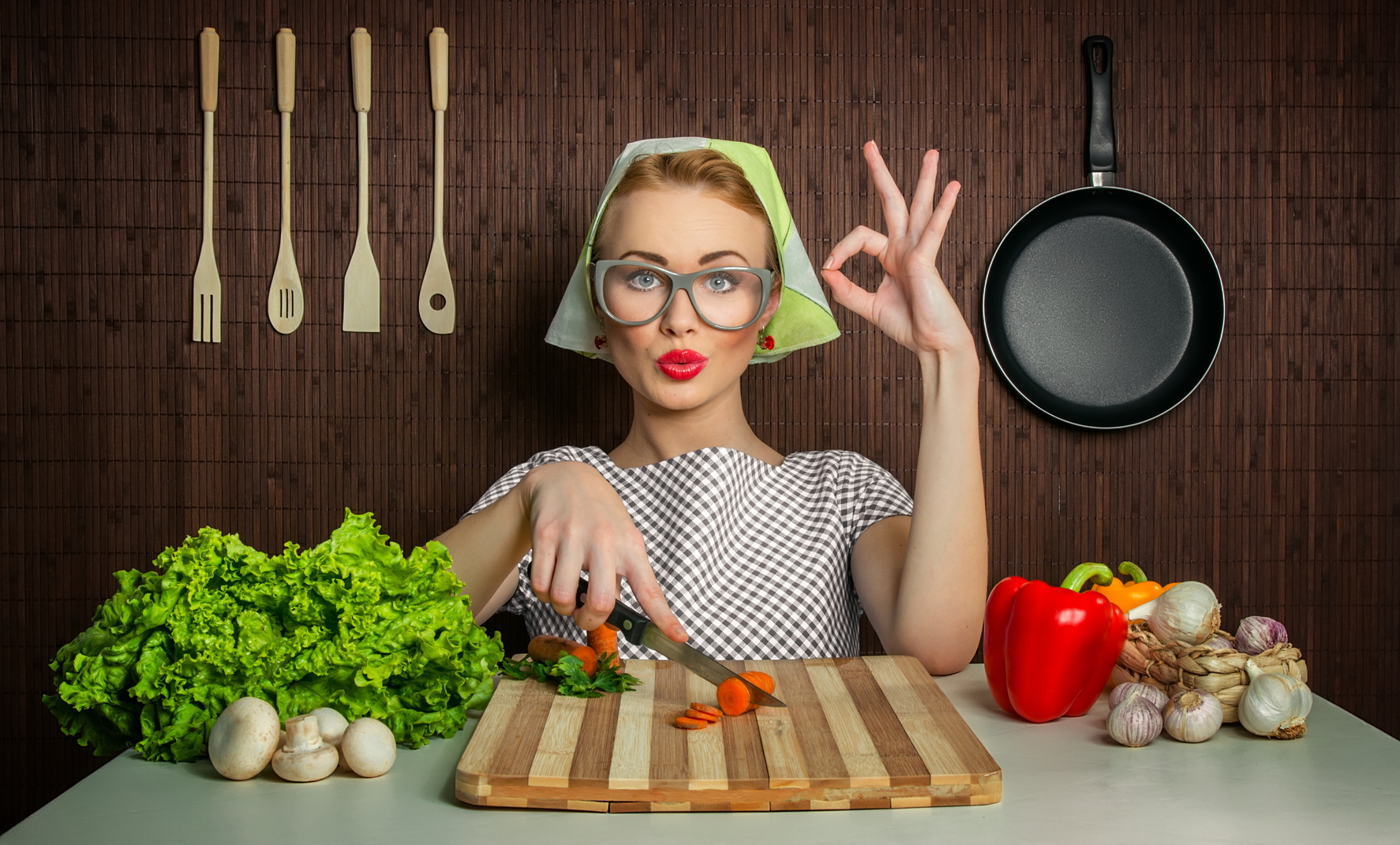
It can’t be surprising that the number of Americans eating at home is declining. We’ve been eating out more frequently, reducing the amount of meals we’ve been cooking at home. Calories consumed fast food and restaurant has grown to be a bigger part of the calorie pie, while the percentage of calories from meals cooked at home has decreased.
This, however, is extremely unfortunate, and could easily have contributed to the obesity epidemic. Why? Because food prepared at home is healthier. We eat fewer calories when we cook at home. And when restaurant dishes and home cooked meals are compared on a per-calorie basis, home cooked meals are healthier.
“When people cook most of their meals at home, they consume fewer carbohydrates, less sugar and less fat than those who cook less or not at all – even if they are not trying to lose weight,” says Julia A. Wolfson, MPP, a CLF-Lerner Fellow at the Johns Hopkins Center for a Livable Future and lead author of a study from the Johns Hopkins School of Public Health.
They also have more fiber, calcium, and iron compared to food that’s prepared away from home. Increased cooking has also been linked to more consumption of fruits, veggies, and whole grains.
The study also showed that those who ate more frequently at home also ate fewer calories when they did choose to eat out.
The shift in eating away from home therefore also means a shift in the consumption of more unhealthy foods. Preparing food at home could help with chronic disease prevention such as heart disease, diabetes, strokes, and gastrointestinal cancers.
“Eating at home” sounds like it would be the simple answer to chronic disease. However, many studies found that just because people are eating at home, doesn’t mean they’re cooking or preparing food at home. In fact, almost most half of all fast food eaten by children aged 2 to 18 years old in 2006 was consumed at home.
Similarly, another study found that although people were eating more food out and fewer people are cooking at home, home food supply has remained the top source of energy. This could be for several reasons, one of which could be that more people are relying upon ready-to-eat foods that require no preparation. These foods, though they are consumed at home, don’t count as ‘home cooked.’. Food in this category can range from individual fruits, like apples and bananas, to chips and snacks, to microwavable meals from the freezer section of your grocery store.
The food prepared away from home, but consumed at home, has been associated with increased calorie intake, decreased nutritional quality and weight gain like their restaurant counter parts.
It seems like cooking at home is an easy choice: be healthier and save money. But this might not even be enough incentive. Even during the recession, Americans continued their ‘pre-crisis’ diet at restaurants and fast food chains. Despite rising costs and decreased employment, dining out continued to be a staple in American culture.
It may also be that food simply tastes better when it’s been prepared away from home. And this isn’t a new problem. Americans have always had trouble making healthy food taste good on their own. In The Journal of the American Medical Association in 1913, researchers noted that “vegetables are frequently boiled in a way in which deprives them of their characteristic odor and their toothsomeness.” The journal continues by saying that “villainous and idiotic” are the only adjectives that can describe our methods of cooking vegetables.
Despite the fact that eating home cooked meals is healthier and can prevent chronic illnesses, we a) simply don’t it and/or b) we don’t know how.
As one researcher in the Canadian Journal of Dietetic Practice and Research said:
“Back at the turn of the century, we began the long process of turning over to the food industry many of the decisions about what we eat, in the name of habit or convenience or taste. Today our staggering rates of obesity and diabetes are testimony to the faith we put in corporations to feed us well. But the food industry is a business, not a parent; it doesn’t care what we eat as long as we’re willing to pay for it. Home cooking these days has far more of a sentimental value, it’s a survival skill.”
So what can you do if you have no idea how to cook, and you want to cook the right way?
- Join Skillshare Skillshare offers short, online culinary classes on everything from how to chop vegetables, baking tips, choosing and preparing meat, and following specific recipes. All classes are from industry experts.
- Download Nutrino Nutrino recommends recipes that are personalized to your taste and dietary needs. Not only will you be eating healthy, you’ll be eating the right foods for you.
- Download Perfect Produce You’re going to need lots of fruits and veggies to start cooking healthy meals for yourself. Perfect Produce helps you save money by telling you how to pick, store, and prepare fruits and veggies.
- Download Escoffier Cook’s Companion This app includes a kitchen timer, measurement converter, cooking glossary, equipment list, and even an ingredient list that gives you an overview of hundreds of ingredients.
- Host or attend potlucks with your friends. For those of who want to try it sans technology, try an old fashioned potluck. Cooking is often more fun when you aren’t the only one that’s going to reap the benefits. Cooking for others will also give you more incentive to create delicious, healthy meals
For more information about cooking to live longer, check out this video from NutritionFacts.org.

